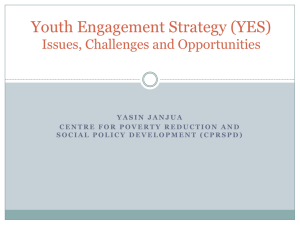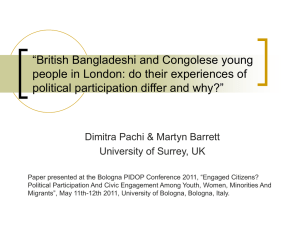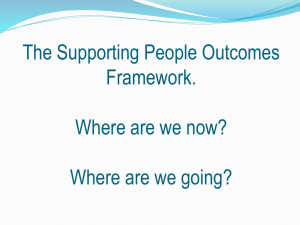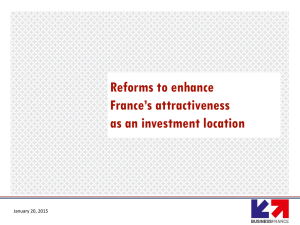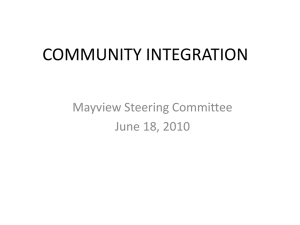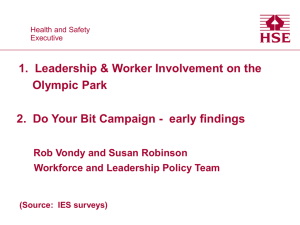Care Workers
advertisement
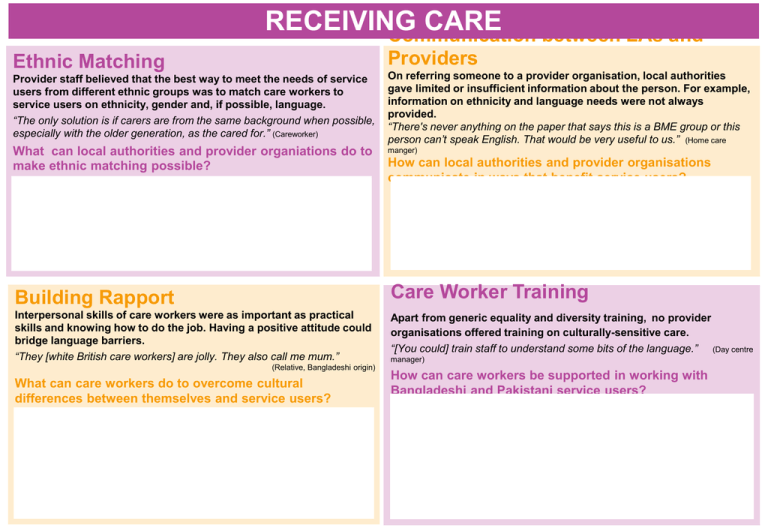
RECEIVING CARE Communication between LAs and Providers Ethnic Matching Provider staff believed that the best way to meet the needs of service users from different ethnic groups was to match care workers to service users on ethnicity, gender and, if possible, language. “The only solution is if carers are from the same background when possible, especially with the older generation, as the cared for.” (Careworker) On referring someone to a provider organisation, local authorities gave limited or insufficient information about the person. For example, information on ethnicity and language needs were not always provided. “There's never anything on the paper that says this is a BME group or this person can’t speak English. That would be very useful to us.” (Home care What can local authorities and provider organiations do to make ethnic matching possible? manger) How can local authorities and provider organisations communicate in ways that benefit service users? Care Worker Training Building Rapport Interpersonal skills of care workers were as important as practical skills and knowing how to do the job. Having a positive attitude could bridge language barriers. “They [white British care workers] are jolly. They also call me mum.” (Relative, Bangladeshi origin) What can care workers do to overcome cultural differences between themselves and service users? Apart from generic equality and diversity training, no provider organisations offered training on culturally-sensitive care. “[You could] train staff to understand some bits of the language.” (Day centre manager) How can care workers be supported in working with Bangladeshi and Pakistani service users? The 3 key recommendations to improve satisfaction with receiving social care are… ACCESSING CARE Raising Awareness Reducing Stigma There was a perception that local authorities had a poor understanding of black and minority ethnic service users’ needs. Bangladeshi and Pakistani groups were especially unlikely to know about or access LA social care services despite having had critical needs for years. “We remain last in the queue for everything because we don't even get to know about our rights, what we are entitled to” (Relative, Pakistani origin) It was widely assumed that there was a stigma attached to professional social care within south Asian groups, because family members were expected to provide care at home. “I think within the Asian community, sometimes they don't ask for that extra help, because it's not seen as the done thing.” (Day Centre, senior manager) How can local authorities raise awareness of social care services among Bangladeshi and Pakistani groups? What can be done to reduce reluctance in accessing formal social support among Bangladeshi and Pakistani groups? Access Social Workers Bangladeshi and Pakistani groups felt they had to ‘fight’ for services. Local authority automated telephone helplines were problematic for people who spoke poor English. The paperwork involved in challenging LA decisions also put them at a disadvantage, largely because of the language barrier. “Actually we have no idea what to do, what not to do, where to go, where not to go, where to get help from, where not to get help from” (Relative, Pakistani origin) How can local authorities help Bangladeshi and Pakistani groups navigate the care system? Bangladeshi and Pakistani groups did not expect their social worker to speak their language; however cultural barriers between social worker and service users were sometimes present. “[The ethnic background of the social worker does not matter] as long as they understand the culture.” [Service user, Pakistani origin) What would help social workers to work effectively with Bangladeshi and Pakistani groups? The 3 key recommendations to improve satisfaction with accessing social care are… Getting Care SERVICE USER DISCUSSION Bangladeshi and Pakistani people found it difficult to get the care they need. One reason for this was because local authorities were difficult to get in contact with. “Actually we have no idea what to do, what not to do, where to go, where not to go, where to get help from, where not to get help from” (Relative, Social workers Bangladeshi and Pakistani people did not think social workers need to speak the same language as them. People did want social workers to understand their culture. “[The ethnic background of the social worker did not matter] as long as they understand the culture.” (Service user, Pakistani) Pakistani) What would make it easier to get the care you need? Care workers from the same community People believed that it would be good to have care workers from the same community and speak the same language as the people they help. “The only solution is if carers are from the same background.” (Careworker) Should care workers be from the same community as you? How can social workers help you better? Care Workers People said that having a care worker that talks nicely and treats you well is important. People wanted a friendly care worker even if they did not speak the same language. “They are jolly. They also call me mum.” (Relative, Bangladeshi) How should care workers treat you and talk to you? The 3 key recommendations to improve satisfaction with social care are… GATHERING DATA ON SERVICE USER SATISFACTION Suitable Translations Gathering the views of users When using Urdu and Bengali translations of the questionnaire, understanding was impeded by the quality and style of the translated survey questions. Use of translated questionnaires is low on the Adult Social Care Survey. “It should be written in proper Urdu, if it is written like that then it would be good. It will be easier to read and understand …If you read it two or three times then you will understand it.” (Carer, Pakistani origin) Service users are often helped in completing satisfaction surveys and this is more common among BME groups. This help includes someone discussing the answers, writing for the user or even completing it on the user’s behalf. We found that sometimes the views of the relative rather than the service user were recorded. “Mum... this is a form from the social service about you, right. I will fill it and send it then. Usually she agrees on it.” (Carer, Pakistani origin) How can translations and information about translated questionnaires be improved? How can questionnaires be presented to make it clear it is the views of the service user which should be given? Which services? Understanding the questions Service users (BME and white) did not always think just about local authority social care services when answering satisfaction questions. The services considered varied from question to question but included NHS services, police and other council services. “They look after you, make you feel safe…You can trust a copper to be helpful…They care for you in the community” (Service user, Bangladeshi origin) What implications does this have for analysis? How could the questions be asked in a way which focuses on social care services? There were a few terms used in the questions which were not universally understood and this can particularly affect people whose first language is not English. The easy read versions had easier language but service users can be drawn to select answers with smiley faces (happy and sad faces are used next to answer categories). “I like that one…because it’s happy” (Service user, Pakistani origin) What could be done to simplify the questions to make them easier to understand? The 3 key recommendations for gathering and using data on satisfaction with social care are…


